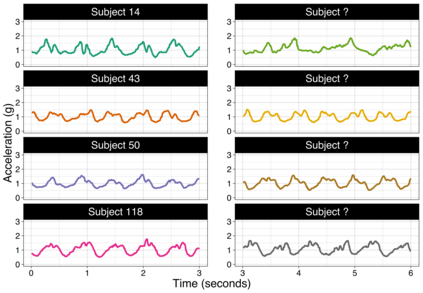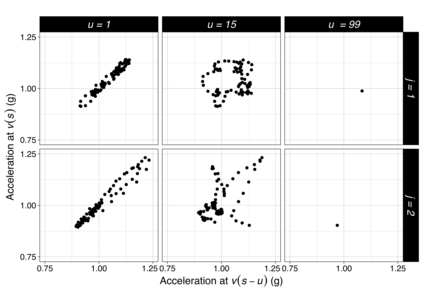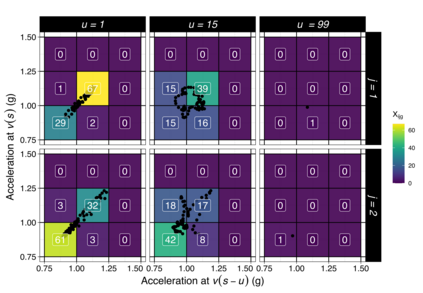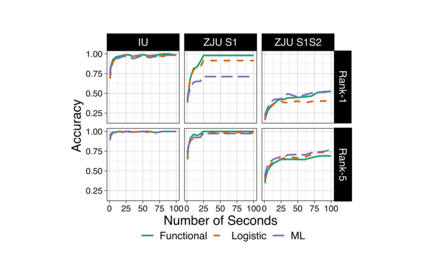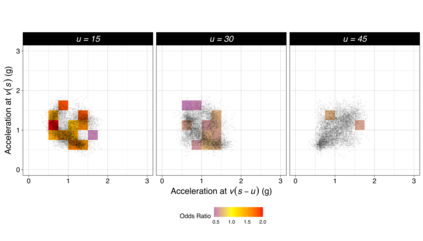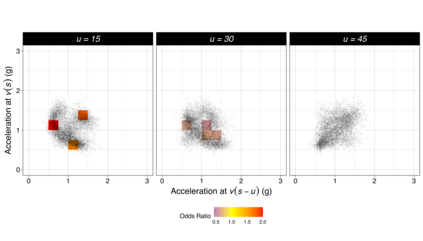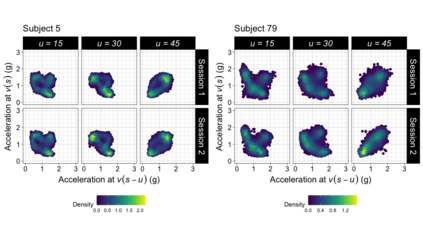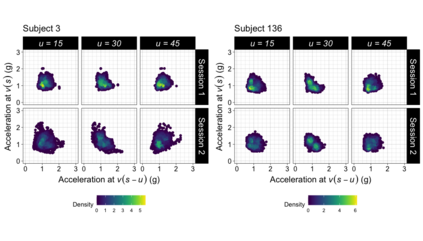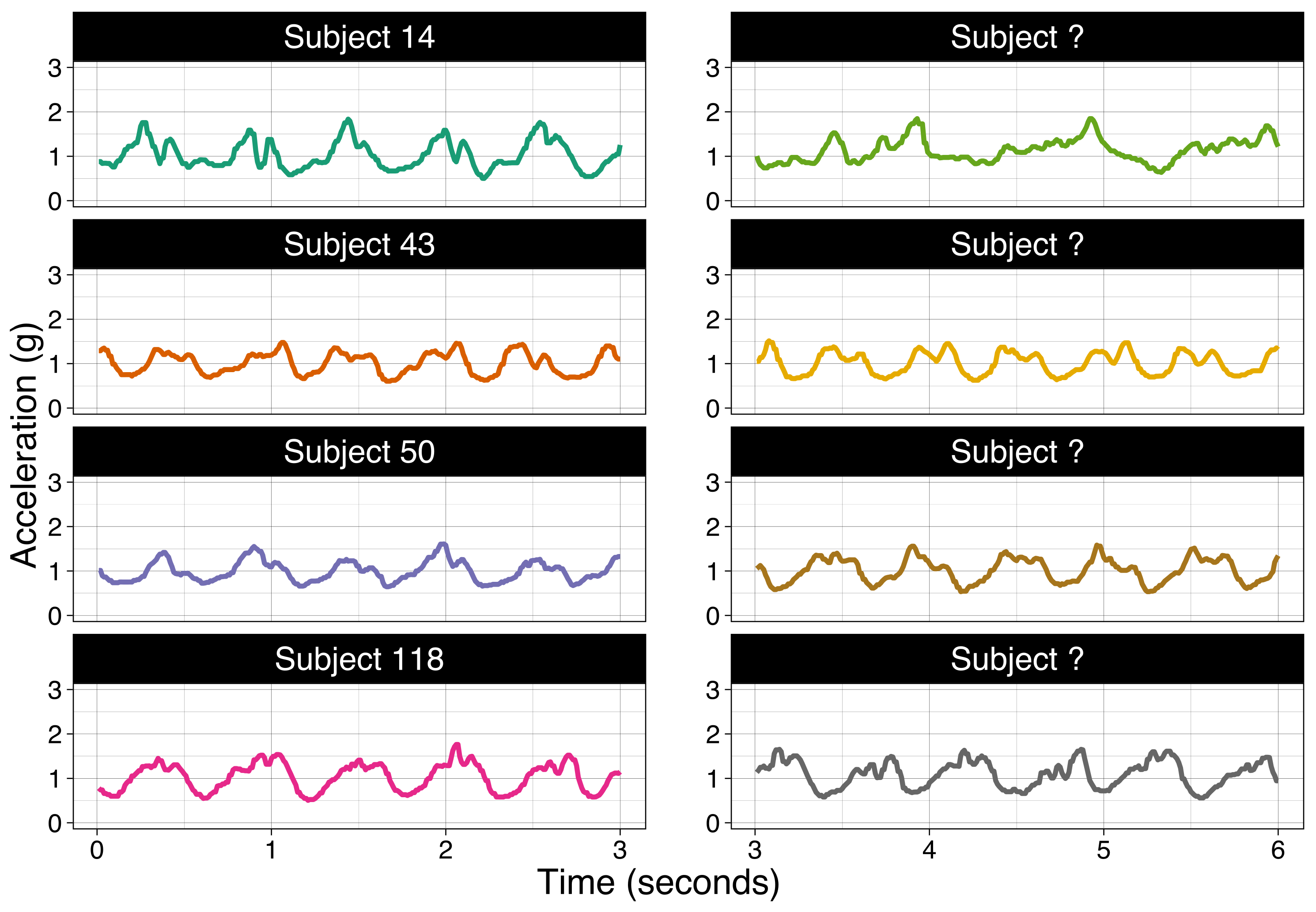We consider the problem of predicting an individual's identity from accelerometry data collected during walking. In a previous paper we introduced an approach that transforms the accelerometry time series into an image by constructing its complete empirical autocorrelation distribution. Predictors derived by partitioning this image into grid cells were used in logistic regression to predict individuals. Here we: (1) implement machine learning methods for prediction using the grid cell-derived predictors; (2) derive inferential methods to screen for the most predictive grid cells; and (3) develop a novel multivariate functional regression model that avoids partitioning of the predictor space into cells. Prediction methods are compared on two open source data sets: (1) accelerometry data collected from $32$ individuals walking on a $1.06$ kilometer path; and (2) accelerometry data collected from six repetitions of walking on a $20$ meter path on two separate occasions at least one week apart for $153$ study participants. In the $32$-individual study, all methods achieve at least $95$% rank-1 accuracy, while in the $153$-individual study, accuracy varies from $41$% to $98$%, depending on the method and prediction task. Methods provide insights into why some individuals are easier to predict than others.
翻译:暂无翻译

